The whole settling in process is just about over, with our little office space more or less set. Which is to say, it looks less like a warehouse! I’ve also been feeling more rejuvenated, and ready to take on projects with a fresh mind. I definitely felt some serious burnout from the last few years, which can be traced back to a single very specific, and perhaps unlikely source.
In other words, here we are at last. The best way to celebrate the start of a good year; by lamenting on a series of mistakes, and pouring over where passion got poisoned. Today’s episode of the soon-to-be ancient sutra (scripture) in progress will be about how the acorn fell far from the tree. This is the story about what went wrong with the first time we made a video game.
Without further ado, here goes the retrospective of ‘Acorns Above: A World Gone Nuts!’ .
In the beginning, there was…
Rewind back to 2012. As with the year 2000, there were more than a few people counting on an ancient civilizations misread prophecies being right, and the world going down. Of course, had to pick that year to officially register our little development outfit, Ninja Chip Studios. I mean, the game we started on was about an ancient nations doom and forthcoming sequel to apocalypse, so why not?
This is around when we began putting actual money down to work on Project: Elysium in its original form. As has been alluded to in the past, this previous version was radically different from what it is now. The reasons for this are honestly better covered in a later post. For now, we’ll just say that at some point, we chose to freeze the project in favor of a smaller, mobile friendly game we had began fiddling with in our spare time.
There is some disagreement between Mimi and I as to how exactly we got the idea. By my recollection, it was a joke that came up during one of our many late night planning sessions. We had spent months dreaming up exceptionally serious, and frankly humorless scenarios. Combined with the possibly dangerous lack of sleep, my brain did the most natural thing it could; apparently cave in on itself, and suggest we throw in chipmunks in fighter planes.
The notion amused us enough for a few days, and then led to discussions over how, at the time, mobile gaming was becoming the new hot thing. So we took some time out, and over a weekend or two, put together an early control prototype, dubbed ‘Acorns Ahoi!’.
The Second Dimension
The basic plan was to have two teams fighting over nuts, along the lines of capture the flag. Sprites were

created fairly quickly, and it wasn’t actually long before we had a playable game running. In this build, you could fly around, get into dogfights with computer controlled planes, and steal acorns. Naturally, the enemy artificial intelligence needed to be adjusted, and the actual game play needed some layers, but for the most part, it was looking good.
That’s about when we came to problem number one; a complete lack of cohesion with what was being built, and to what end.
At the end of the day, ‘Acorns Ahoi’ should have been a very simple, top-down bullet hell style game, with a development time of no longer than a month or two at worst. Without a coherent (or even strictly agreed upon) direction for anything, it got much worse than two months.
On the art side, there was no real plan. There was of course a long checklist of what I wanted to see; planes titling when they turned, cartoon style explosions, visual evidence of rodents, WW2 style guns… it was a long wish list. Most of which did not actually relate in any way, shape or form with what the -game- was. A prime example of this can be seen in the sprite animation above. Specifically; the scarf (and in some versions, a swishing tail). It was a tiny detail, and a cute one that brought life to the player sprite. However, it was utterly useless, and quite near invisible when the game was actually running. More so when we pulled the camera further away for game play reasons.
The little things
On its own, a couple of frames of animation being thrown in would not be a huge deal. It’s an important note, however, because it was indicative of a larger problem; the disregard for optimization plans. Simply put; we were getting far too carried away with adding in details that simply did not need to exist. A scarf or tail, again, would be okay to hand wave, but that was only the beginning.
Not long after we had the planes going (with scarves, tails, and even a tilt to the planes while turning), we got it in our heads that all objects should be 3D. Everything from the player craft, to the pilots, to the individual guns.
The image on the right shows the model of the chipmunk pilot, along with the same machine gun that
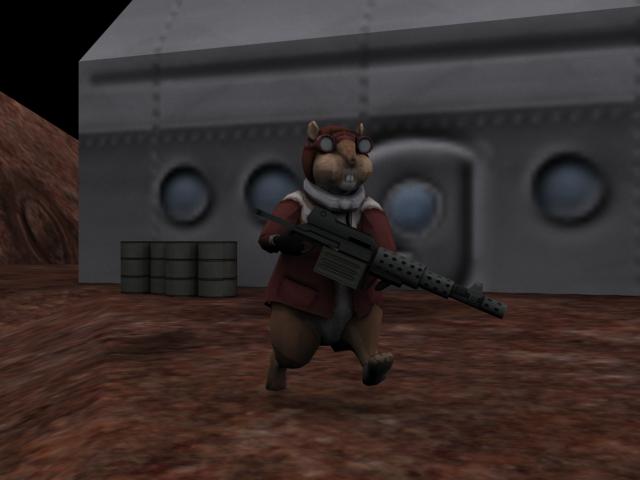
would be mounted on the players aircraft. Aside from the nightmare fuel that comes from slapping together such a character without a clear aesthetic direction, there was one major issue. You see, for all the time we would take to make him, and his little weapon… none of it would be visible while actually playing. And yet, we would force the program to render the pilot, the guns, and the plane. All drawing on their own individual graphics files for textures (which included normal maps for no discernible benefit!).
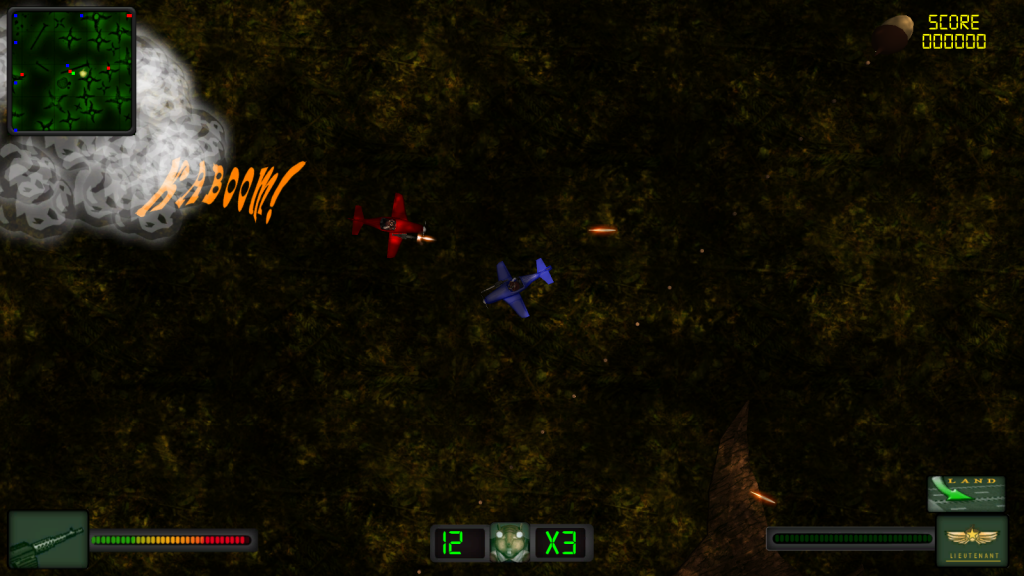
This is all to say that, on the art side, we would spend a lot of time on each aircraft, each gun, and each pilot, individually, for no actual result that couldn’t have been attained in a fraction of the time.
Details, details…
Besides the fact all of those little details were visually pointless, they caused another problem; optimization. All those objects processing all those textures meant the program was undergoing more stress. While this was negligible on the PC, it was absolutely a problem on phones. That was a point we only really learnt the hard way much later. Why? Because, although we had -talked- about making this game for mobile, we didn’t actually make a mobile build until literally the next YEAR. Being naive as we were, at the time we had assumed that it would be a simple matter of just ticking the “Android” box in the compile menu, when it came time to building the app itself. We did not plan around the fact that phones were simply less powerful devices, and that while desktops might forgive a certain amount of laziness or mistakes, the smaller devices wouldn’t.
This is also, incidentally, why any lack of cohesive art style was a problem.
It took us a bit longer than it should have to learn that ‘art direction’ is about more than ‘what looks good’. Everything needs to come together in a way that:
- Makes the game look good overall (obvious point)
- Forms part of the interface, insofar as being easily readable and communicating what the player can, can’t or should do.
- Keeps in mind the limitations of hardware, and finds the best balance point between “looking good” and performing well.
- Connects to the mood of the game. This relates to point one, but more than looking great, the art needs to connect to the narrative in some way. The above screenshot, with its ground and trees based on photographs, stands in stark contrast to the idea that ‘Acorns Ahoi’ was meant to be an almost cartoon like experience.
Chaos Reigns
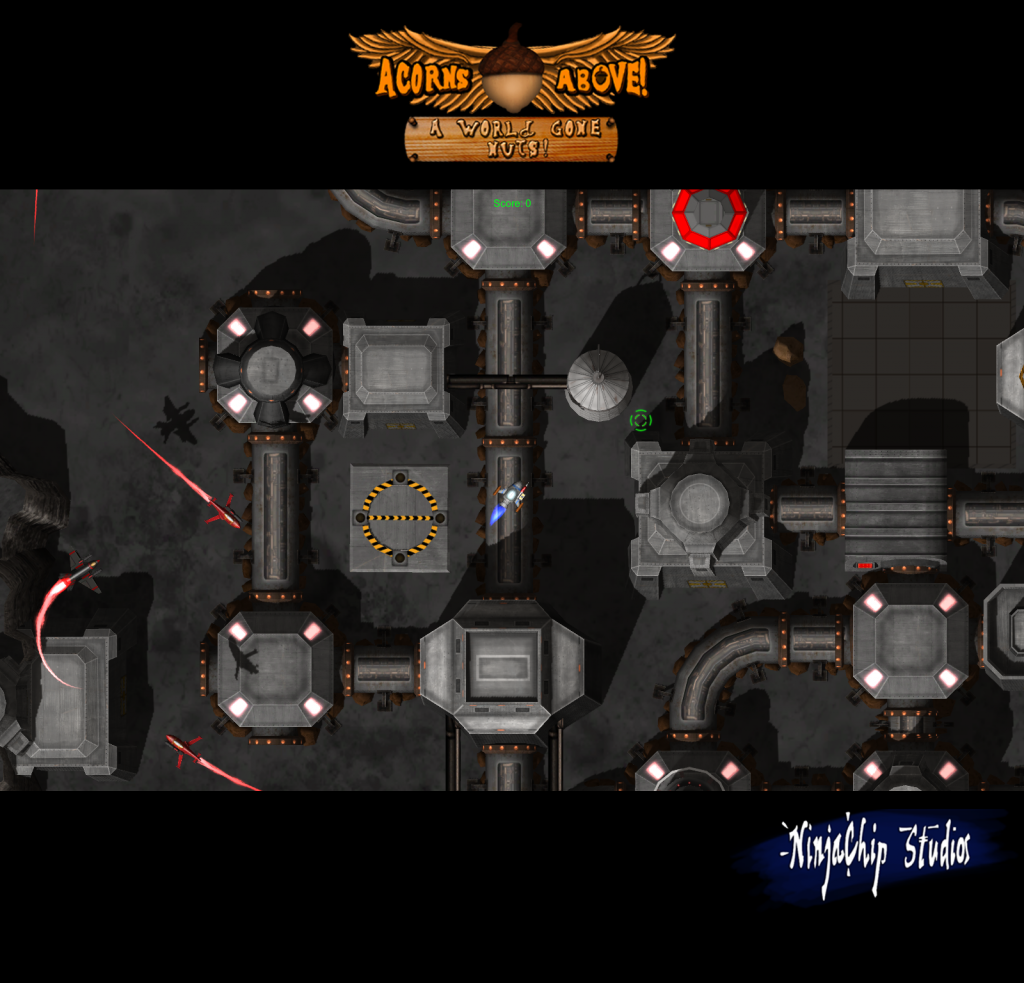
Art Direction and technical design were not the only areas in which the project was, to put it mildly, extremely chaotic. For at least half of its development cycle, the entire game was based around how funny (sigh) the concept of squirrels and chipmunks battling over flying nuts was. As a game, it had basic controls for flying, shooting, and even doubling your speed for brief bursts. What it did not have was a thread linking all of these disparate systems.
A prime example of this disparity was weapons. Originally, the player’s weapons were to be split into three categories. The first were meant to be your moment-to-moment weapon, which you’d simply fire in front of you when engaging in battle. Missiles were intended to be area of effect explosives, which would allow you to either damage groups at once, or fire projectiles that would follow a target (depending on which ones you had). Special’s, as the name implies, were to be limited supply items that had unique effects. Plans included:
- The Boxzooka: a bazooka that fired out boxing gloves, which would push enemy planes into each other.
- The Spam Mail Bag: a bag which would leave a trail of spam mail behind the player, meant to block incoming missiles and throw off enemies.
- The Nosferret-2: A health leaching ray gun.
Individually, these sounded fun (to us, at least). However, each presented its own difficulties. For instance Many of the Special weapons would require a degree of physics interactions, a function nothing was built around. Likewise, Special Weapons would require an additional input control. In turn, this would have further complicated playing the game on phones.
Focus!
As we moved on with development, most of the above issues were addressed. Art direction finally started to get some focus, and consideration for the game’s play-ability and structure. Weapon complexity was reduced from the three categories to two (rapid fire and homing missiles). Level’s were built around how the player moved, and started to include their own challenges, such as flying asteroids and temporary barriers.
We didn’t do a perfect job at all of it though. Boss monsters – a last minute addition- were meant to be unique encounters, but we didn’t do enough to vary their behaviors or weapons. What little we did ended up being extremely buggy. Likewise, while level design was meant to challenge the players movement skills, it was not perfect. Both visual and mechanic quality was all over the place.
In the end, ‘Acorns Above: A World Gone Nuts!’ was a less deep and less feature filled game than it could have been. It was, however, a more coherent game, and an overall more focused package.
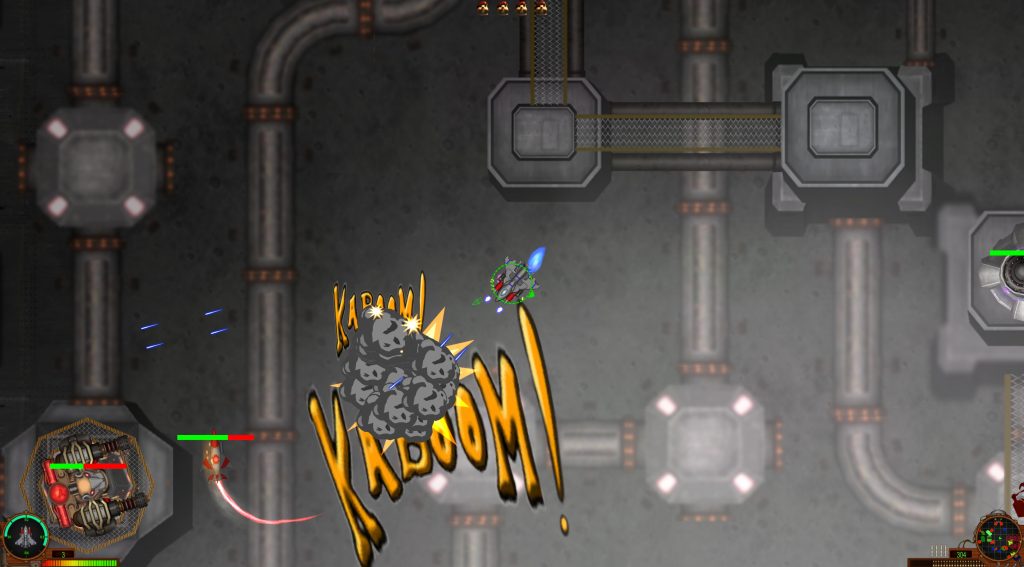
This new focus helped a great deal. When we demonstrated it at our first expo in India, it actually got some good responses. Among the indie developer stalls, ours had perhaps the most traffic on all days of the event. It was also immensely satisfying to have the army of school kids coming over to play, and all having a blast playing and competing with each other!
The Aftermath
 As far as first attempts at building a video game goes, many of the mistakes made were not shocking. Certainly, encountering and learning from these mistakes helped us with our subsequent projects, and directly led to vast improvements in how we approached Project: Elysium. It was nonetheless an immensely frustrating production, so much so that even penning this post has been strenuous.
As far as first attempts at building a video game goes, many of the mistakes made were not shocking. Certainly, encountering and learning from these mistakes helped us with our subsequent projects, and directly led to vast improvements in how we approached Project: Elysium. It was nonetheless an immensely frustrating production, so much so that even penning this post has been strenuous.
We often talk about revisiting the type of game that was AWGN; top down, arcade action, with the multiplayer and weapon options we had initially wanted to feature. Perhaps someday we may yet do so. For now, however, as grateful as we are for the fact that we got to make and release our first game, our only lasting impression has been an emphatic, resounding, and ever so loud;
GOOD RIDDANCE AND NEVER AGAIN.

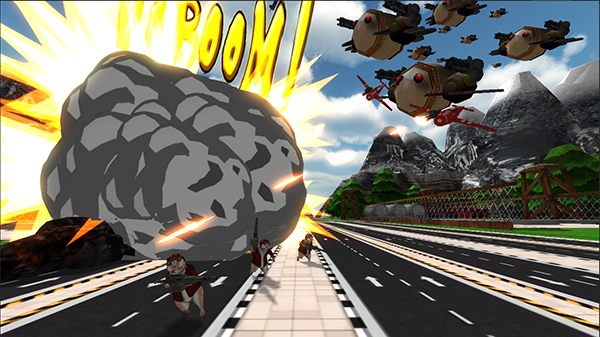
Be First to Comment